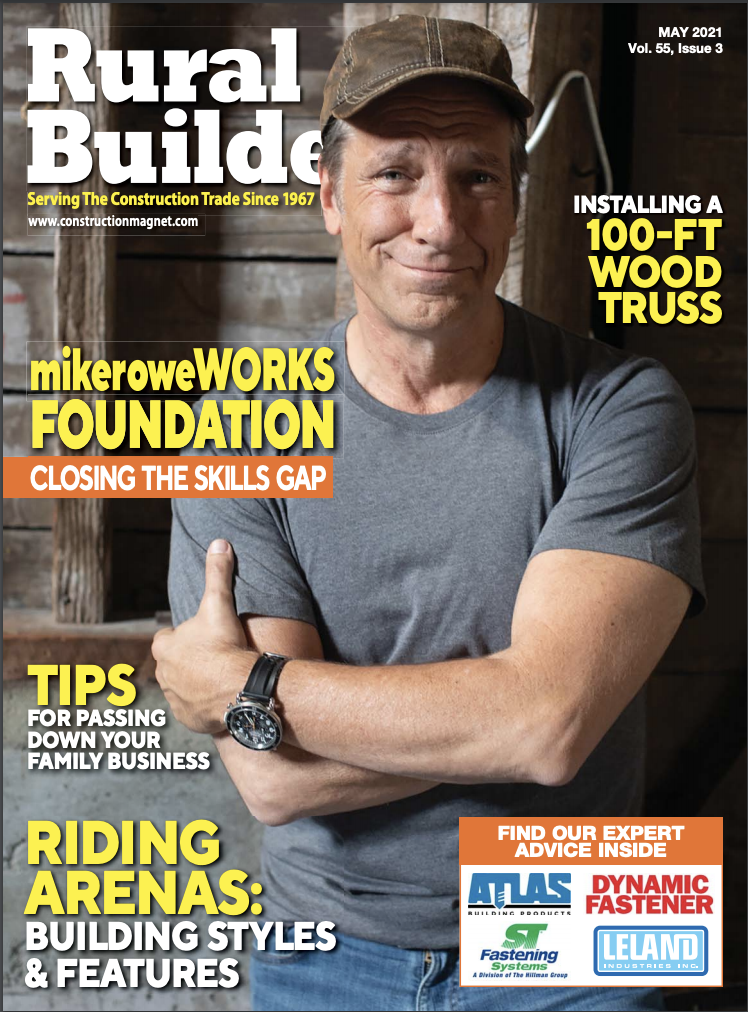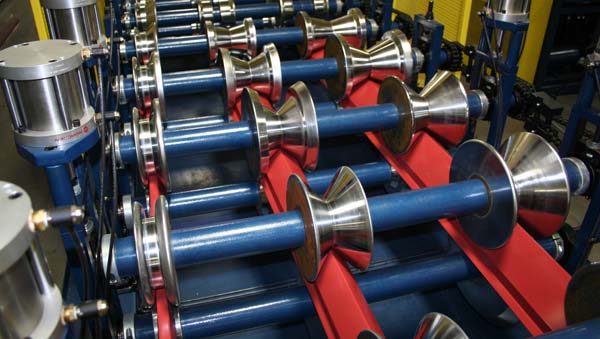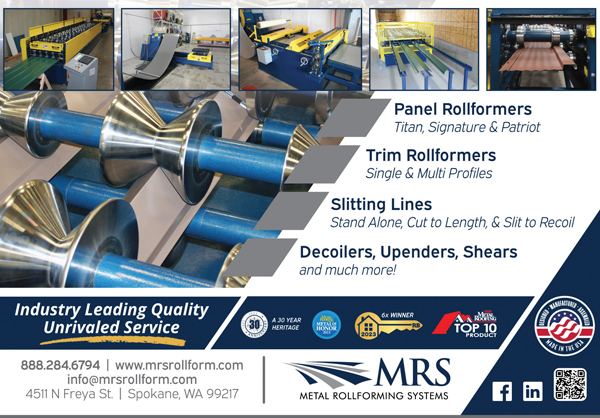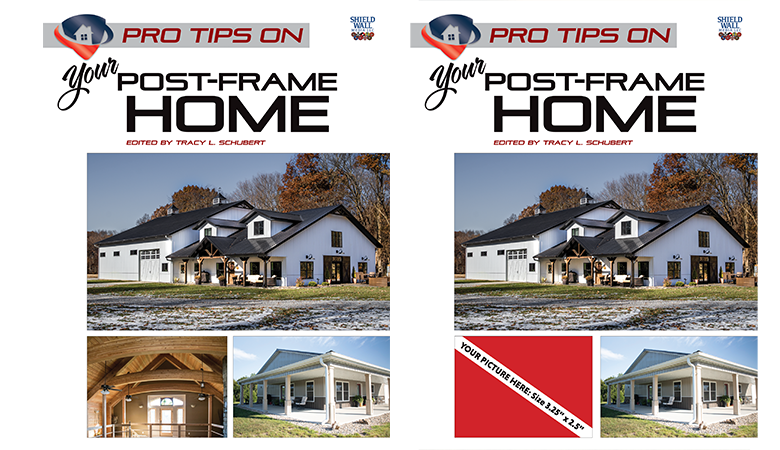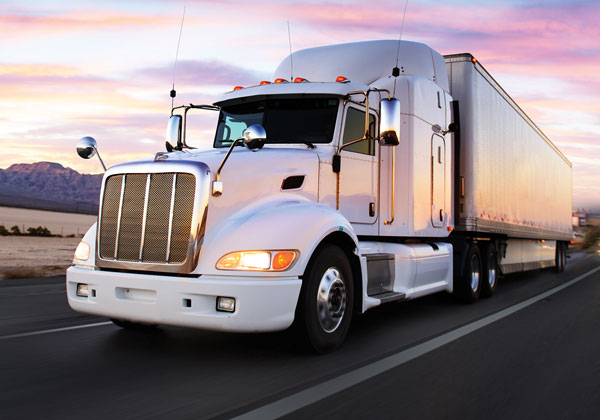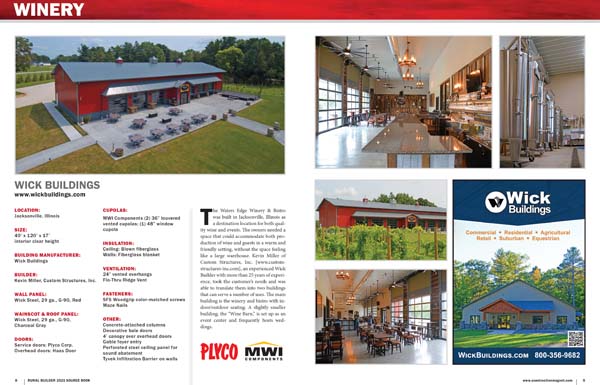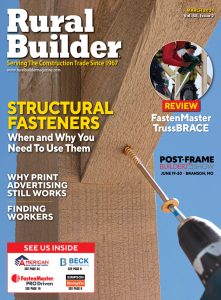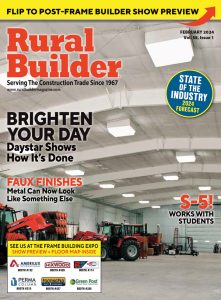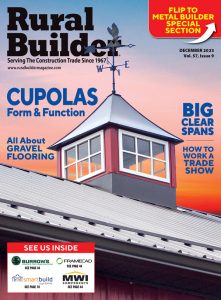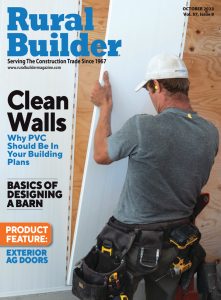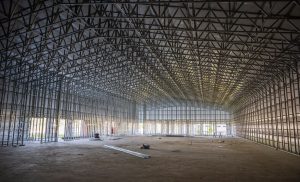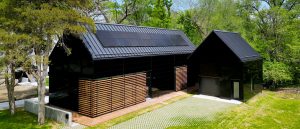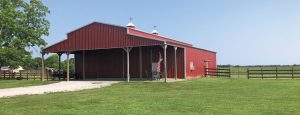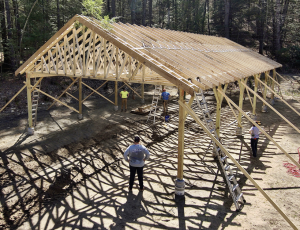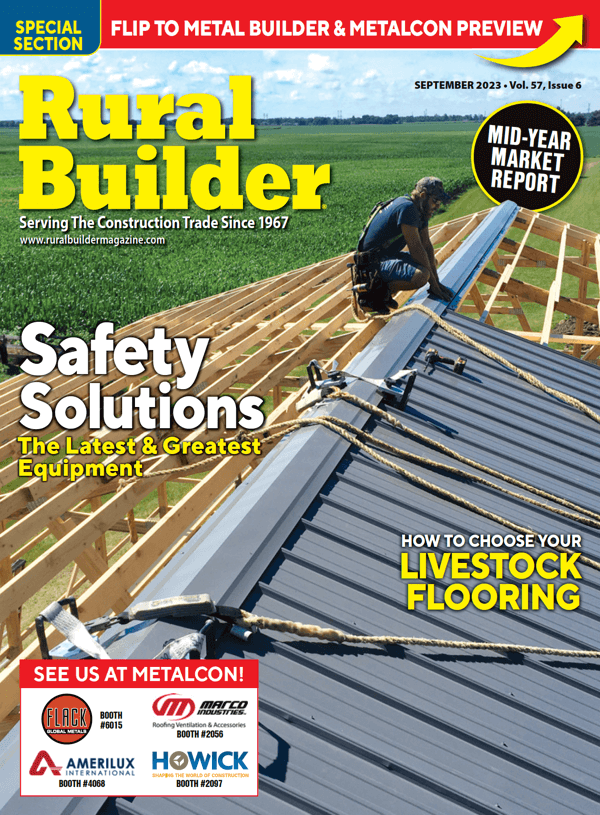By Rural Builder Staff
It started with an idea in 1993 when Dan and Carol McDonald saw a need to service the metal roofing industry. At the time, plant roll forming equipment was extremely costly, so Dan decided to build his own. “Rollforming machines in the early ’90s were prohibitively expensive, you only had big national companies manufacturing and selling the steel roofing; you didn’t have the smaller regional manufacturers,” says Bill Griffin, son-in-law to the McDonalds and current partner/president. “For him (McDonald) to initially get in the rollforming game, he couldn’t afford to go out and buy one of these new machines.”
Over the next few years McDonald focused primarily on selling metal with his custom manufactured roll former. Griffin goes on to say, “In the early and mid-’90s we would run classified ads in the trade magazines for our rollforming equipment. We had a small crew of 6-8 people building this equipment and had limited profiles and product offerings.” In the years that followed Metal Rollforming Systems saw a gradual metamorphosis from roofing supplier to equipment manufacturer, until in 1997 when equipment sales eclipsed roofing sales and became the sole focus.
As the company shifted in the direction of marketing and selling their own equipment, their focus was two-fold: customer service and being price-conscious. “There was nobody doing what we were doing anywhere near the price point we were doing it at. I like to compare us to Henry Ford, we took and ‘production-lined’ roll forming. At the time we didn’t offer a lot of bells and whistles or customizations, but if you wanted a quality AG panel roll former at a fair price, we were your guys.” As the primary focus shifted to manufacturing the equipment rather than the product, the company found and embraced this niche.
The Customer is Always Right
Griffin remembers McDonald instilling a customer-focused drive, “Making sure that we answer questions and provide value-added guidance during the sales process, and offer industry-leading support and service after the sale and for as long as the customer owns that equipment.” Dan was very determined to make sure everything was right. He personally spent countless hours on red eye flights, going out and personally servicing and setting up equipment. “This is something that we continue to do even to this day, taking a vested interest in the success of our customers.”

Griffin and the rest of MRS know their clients want to automate and streamline the metal roll-forming process as much as possible and want to keep their customers happy. “You talk to a lot of customers, hear their needs, you talk about what their pain points are and you try to address those.”
They apply what they learn into their machine design. “Bending trim on a folder is very laborious,” he says. “So, we’ve been doing a lot of roll forming for trim. It’s got very good consistencies; it’s much faster than doing it on a folder, upward of 700 pieces in an hour!”
The company has other panel profiles including quad ribs, corrugated panels, concealed fastener board and batten, grade 80, 29-gauge snap locks, and
others that they are using to open up different areas for their customers in both the residential and commercial-type construction. “All that is allowing our customers to service a wider area. Once one customer gets a profile in the area, soon another customer adds it,” Griffin says confidently. They are now experts on garnering feedback and applying it to the development of their machines. “We work really closely with our customers and we’ve got great rapport. They’ll have an idea and we bounce it back and forth and say, ‘This is great.’ Then, we’ll go back to our designers, and work to apply this to the tooling design. Then we start working toward a solution.”
Griffin and the MRS family recognize the evolution of the refinement process. “It might not be what it started out as, but the end result is the customer getting what they want and us optimizing it for the roll forming-manufacturing process.” He says the process is a win-win because it lets the company “bring new products to the market and it satisfies the clients’ needs for a value-added product.”
One example of this method is a client in Ohio who wanted to do a quad rib. Griffin explains the gentleman wanted to mimic a standing seam look but still be able to stack the sheets, have through-fastened panels and 3/4”-tall ribs. “This allowed for installation costs to remain the same as any AG panel line, and to utilize existing roll formed trim.” Griffin adds it gives the client an intermediary panel between full snap-lock and a standard AG style panel. “We wanted to make sure we got the 36” coverage, that we could use his standard 40 7/8” 29-gauge material, that the rib height was 3/4” so that it would work well with its existing trims.”
Metal-Heads
Griffin and his brother-in-law Aaron McDonald run the company today, each bringing versatility. Before transitioning into purchasing and scheduling, then sales, and finally to president, Griffin recalls first working summer months while attending Washington State University, focusing on construction management. “I came back to MRS every opportunity I could during breaks or holidays. I enjoyed the work and as a cash-strapped college student a few extra dollars in the pocket never hurt. At the time I would bounce around between the machine shop or assembly floor, wherever I was needed.”
Griffin and the entire MRS family put a lot of love into the machines they manufacture. “We really enjoy all of our machines. They have a lot of commonalities among them,” Griffin says, adding it comes down to how you, the customer, will use them. “If you’re a high-end big volume user, we recommend our Titan line and feel we can put it up against anything and it’s going to perform well for a long period of time.”
He says there are different needs for each customer and they try to offer solutions for all of these needs. The company offers trims, uncoilers and all sorts of roll forming machinery for a multitude of operations and profiles. They try to accommodate every need, but all their machines have one thing in common: quality. Metal Rollforming Systems believes the performance of their machines and manipulating the metal is important, always keeping this in mind from their early years on up to now. “We don’t want an inferior product. Whatever we do early on, we always have to figure out ways to still maintain the quality and integrity of the finished panel.”
Mobility Redefined
Their company has clientèle all over the country. Following through with clients in-person and at the beginning of their product relationship takes a direct approach. “We service all our equipment. The same people that build our equipment are traveling out into the field to do the installations and the training so that when our customer gets their new machine and our guy leaves, they’re confident they know how to operate it.” They average three to four technicians on the road every week, all year, doing field service, setups and installations, and modifications of existing equipment.
The travel aspect isn’t always necessary, though. Their full-time tech staff is there to answer any questions their customers may have. Since they manufacture their equipment they have shelves loaded with new parts for repair and can quite often remedy any situation either same day over the phone or next day with parts sent overnight. Their accessibility mirrors the company’s capabilities as a whole. “We have the equipment and vendors, and the electronics section to source replacements for discontinued components. We’ve got teams in house; we’ve got a full electrical controls team. They’ll do the designing and the programming work so that if that component fails on you, you’re not without it – we have a solution to replace it, keep you up and running.” Their in-house organization lends itself to accuracy and efficiency. “We do everything from welding to machining to assembly to electrical. We even do our powder coating for the painting process, so it’s rare that we outsource. Keeping it in-house helps us with lead times; it helps with quality control.”
Rise of the Machines
The increase of metal roofing installs for both commercial and residential is showing no signs of slowing. Metal Rollforming Systems recognizes the trend and demand for their roll formers, trimmers and coilers. Griffin says the residential side has seen particularly aggressive growth. “The growth of metal went from such a small kind of niche thing – you’d see it in pole barns and things like that. But to be able to be involved in some of these new panel designs that are opening up marketplaces, and see everywhere the growth that’s happened for our customers, is really satisfying and it’s mutually beneficial.”
Griffin sees much of the growth is in relation to the uptick of steel in builds. “Incorporating some of these industrial- type looks into the residential market in places you normally wouldn’t see steel, and the types of steel they’re using, I think that is where we see the most growth.”
The longevity of the machines they manufacture is paramount to clients investing in them. Sometimes it’s only a part or two that they want upgraded or newer, more efficient technological additions. “We’ll go out there and find 20- to 25-year-old machines they want retooled. We’ll bring shafts, we’ll bring new dies, we’ll have new control consoles that we put on there to upgrade the automation side – all of that can be done. They’ve been running this for 20-25 years; they invest in this and it can run for another 25 years. They’re modular too, so with a single-net profile from us you can always add that second profile to expand your product offering.”
This business model and thorough follow-up service supports their clients and reinforces relationships. They work to maintain their clients’ initial investments. As the client develops their business MRS helps them by adding on with new profiles.
Griffin sees the overall improvements within the roll forming industry as client-based needs. They are looking for efficiencies. “Getting steel loaded onto the roll form coil reel and then getting the completed panels off of the roll former,” he says, adding there’s always opportunity for process improvement. “People lose sight of that. We’ve got a double-headed
uncoiler for increasing the speed with which you can change the coils. We’ve got stacking systems; we’ve seen some things done with conveyor systems on the exit end of roll formers. We’ve seen a lot of customers have maxed out the space of their facility and don’t have room to add equipment. At that point, efficiency gains become much more important.”
He adds they offer trim profiles and trim machines that can manufacture ridge caps, corners, offset corners, and mini corners. “We’re trying to market them toward entry-level people that might not be ready for a multi-trim roll former, but they could still benefit from efficiency gains.”
Through the years, the team at Metal Rollforming Systems has found success by listening to people in the industry, uncovering the challenges they are facing, and developing solutions that work for them. They often find those solutions work for others as well. Everybody wins and
business rolls on. RB
